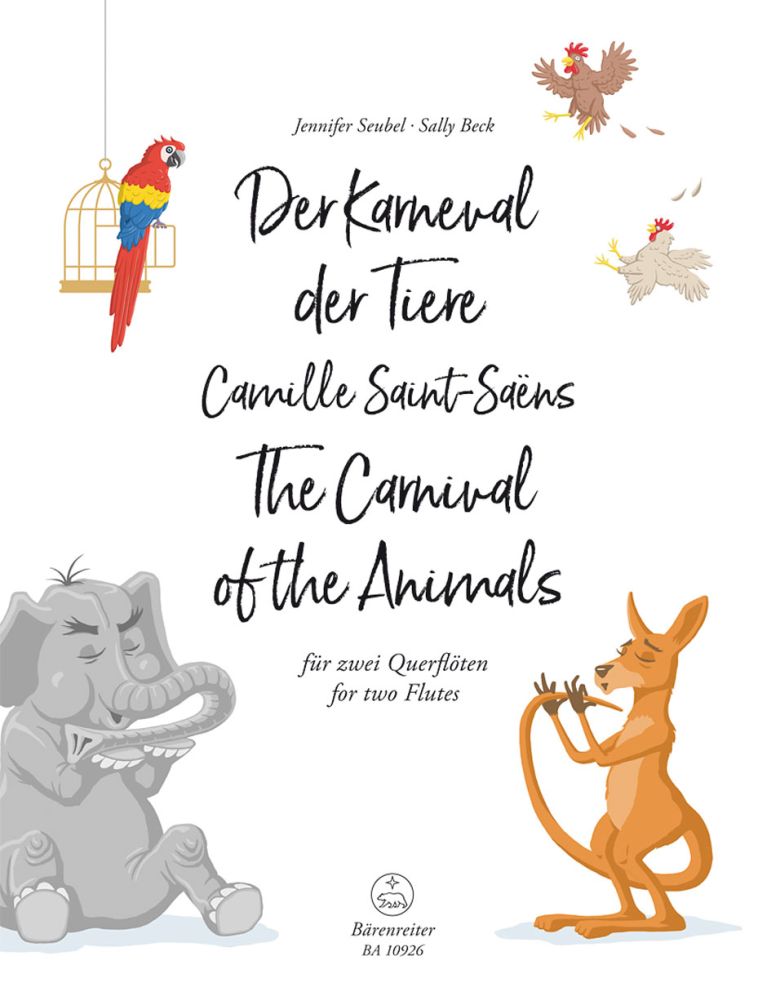Camille Saint-Saëns: The Carnival Of Animals For Two Flutes: Flute Duet:This item is not available anymore from Musicroom Composer/Author : Camille Saint-Saens Instrumentation : 2 Flutes (duet)Publisher : BarenreiterComparer prix & stocks Camille Saint-Saëns The Carnival of the Animals is one of his most popular works altogether. Yet during his lifetime he refused to publish this orchestral piece for fear it would damage his reputation as a serious-minded musician.Now Jennifer Seubel and Sally Beck the flautists of Duo Noble have arranged this famous work for two flutes.The transformation of the major instruments timbres and melodies of the orchestral version into solely two flute parts posed a special challenge. The results exploit the full tonal spectrum of the flute. The arrangement offers several alternatives to expand the range of sound: for example a piccolo can be substitutedfor either flute part in No. 2 Poules et coqs and for the first flute in No. 7 Aquarium.The complete Carnival of the Animals for two flutes14 challenging and effective pieces Camille Saint-Saens sheet music |







